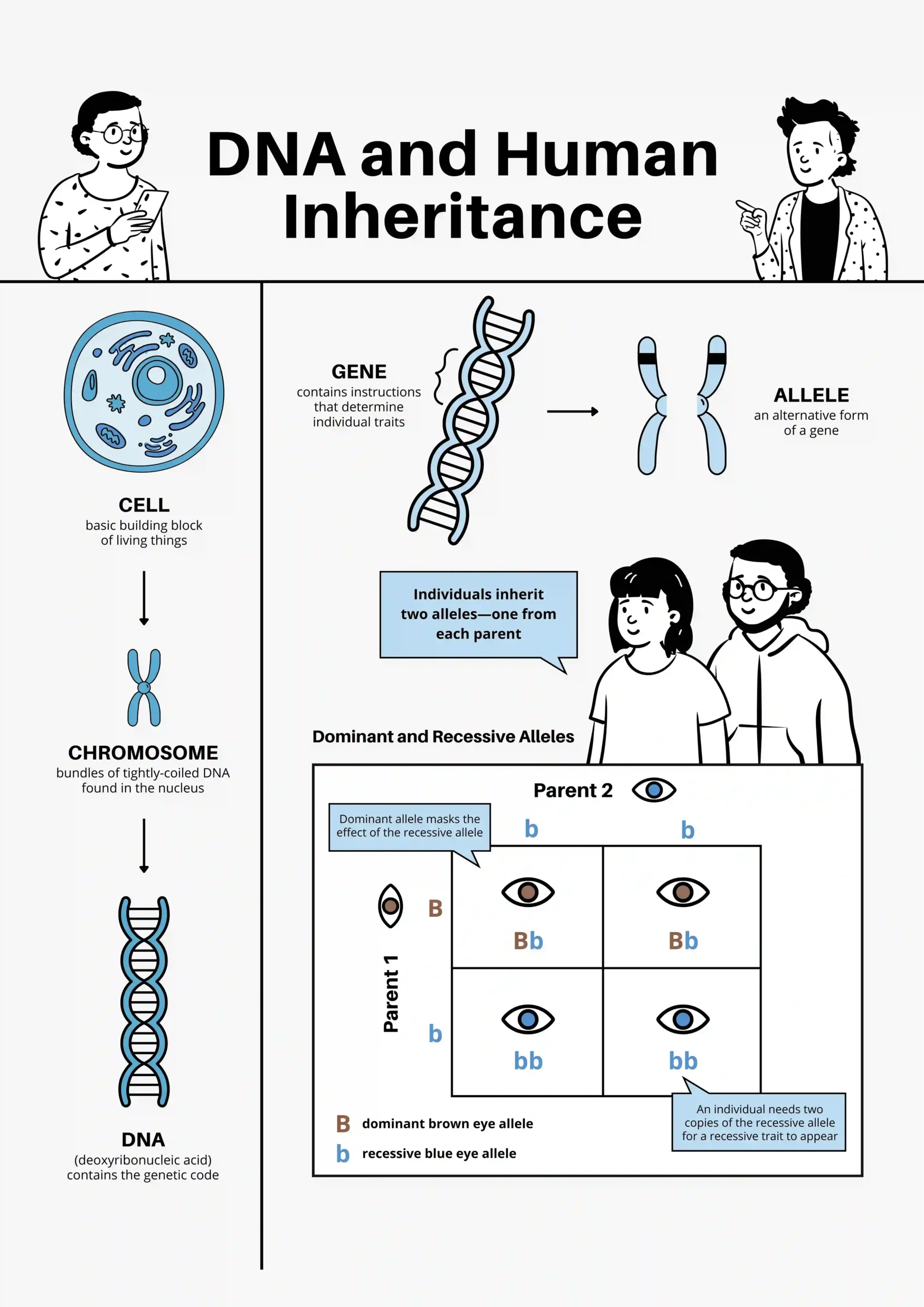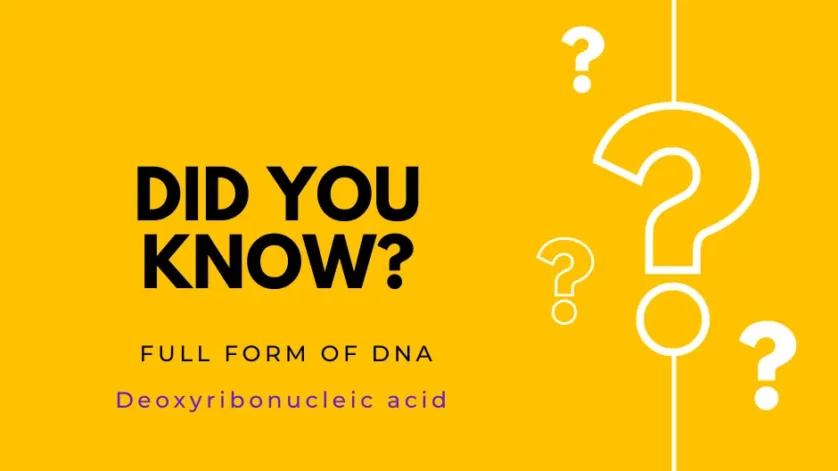DNA Full Form
DNA, or deoxyribonucleic acid, is a molecule that contains the genetic instructions used in the development and functioning of all known living organisms. It is the blueprint of life and is responsible for the traits that are passed down from parents to their offspring.
Who Discovered DNA ?
DNA was first discovered in 1869 by Friedrich Miescher, a Swiss biochemist. However, it was not until the early 1950s that its true structure was identified by James Watson and Francis Crick, with the help of Rosalind Franklin’s x-ray crystallography images.
Structure of DNA
 The structure of DNA is a double helix, which consists of two strands that are twisted around each other. Each strand is made up of nucleotides, which are the building blocks of DNA. A nucleotide consists of a sugar molecule, a phosphate group, and a nitrogenous base. The four nitrogenous bases that make up DNA are adenine (A), thymine (T), guanine (G), and cytosine (C).
The structure of DNA is a double helix, which consists of two strands that are twisted around each other. Each strand is made up of nucleotides, which are the building blocks of DNA. A nucleotide consists of a sugar molecule, a phosphate group, and a nitrogenous base. The four nitrogenous bases that make up DNA are adenine (A), thymine (T), guanine (G), and cytosine (C).
The bases pair up in a specific way, with A always pairing with T, and G always pairing with C. This pairing is held together by hydrogen bonds. The sequence of these bases determines the genetic information that is stored in DNA.
DNA replication is the process by which DNA is copied before a cell divides. During this process, the two strands of DNA separate, and each strand acts as a template for the creation of a new strand. The new nucleotides are added to the growing strand in a specific sequence determined by the template strand.
DNA also plays a crucial role in protein synthesis, which is the process by which proteins are made in cells. The sequence of bases in DNA is translated into a sequence of amino acids, which make up the protein. This process involves the transcription of DNA into RNA, and then the translation of RNA into a protein.
Mutations in DNA can occur naturally or as a result of environmental factors such as radiation or exposure to chemicals. These mutations can have both positive and negative effects. Positive mutations can lead to new traits that are beneficial for survival, while negative mutations can cause genetic diseases or disorders.
In recent years, DNA sequencing technology has advanced, making it possible to sequence entire genomes quickly and at a low cost. This technology has revolutionized the study of genetics and has led to new discoveries in fields such as medicine, agriculture, and evolutionary biology.
DNA is a complex molecule that is responsible for the inheritance of traits from one generation to the next. Its structure and sequence determine the genetic information that is stored in cells, and mutations can have both positive and negative effects. The study of DNA has led to many advances in genetics and has opened up new areas of research and discovery.

